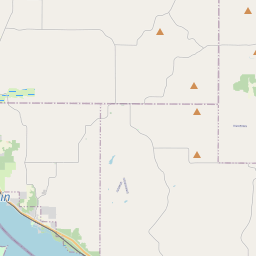Little House Wayside
Historical marker location:
N3238 County Highway CC, Lund, Wisconsin
( Marker is on County Highway CC, 1 mile south of County Highway SS, on the left when traveling south.)
Marker installed: 1978







© OpenStreetMap contributors
Loading...
Searching for other points of interest within 3 miles of this location.The first European to explore Wisconsin was Jean Nicolet, a French explorer who arrived in 1634. He was looking for a water route to Asia but instead encountered the Menominee Indians near Green Bay.
About Pepin County
Pepin County Timeline
Pepin County, Wisconsin, has a rich and layered history that dates back thousands of years. The region was originally inhabited by Native American tribes, including the Dakota, Menominee, and Ojibwe people. These tribes established villages, hunted, fished, and cultivated the land until European settlement began in the 19th century.
In the early 1800s, French fur traders were among the first Europeans to explore the area. However, it was not until 1833 that the first permanent settlement, known as Eagle Point, was established by a group of settlers led by Daniel Stannard. Over the next few decades, more settlers arrived in the area, and in 1858, Pepin County was officially established, named after French explorer Jean Pepin.
Agriculture played a crucial role in the county's growth and development. The fertile soils of Pepin County were well-suited for farming, particularly for growing wheat. This led to a flourishing wheat industry in the 1850s and 1860s, with numerous mills established along the rivers.
Pepin County is also known for its connection to Laura Ingalls Wilder, the author of the beloved "Little House on the Prairie" series. Born in Pepin in 1867, Wilder spent the first few years of her life in the county before her family moved to nearby Minnesota. Today, Pepin County proudly celebrates its role in Wilder's life and the enduring legacy of her writings.
Overall, Pepin County's history is a tale of Native American cultures, European settlement, agricultural progress, and literary significance. From its early days as a Native American territory to its thriving farming community and association with Laura Ingalls Wilder, the county's past has shaped it into the vibrant and diverse place it is today.
In the early 1800s, French fur traders were among the first Europeans to explore the area. However, it was not until 1833 that the first permanent settlement, known as Eagle Point, was established by a group of settlers led by Daniel Stannard. Over the next few decades, more settlers arrived in the area, and in 1858, Pepin County was officially established, named after French explorer Jean Pepin.
Agriculture played a crucial role in the county's growth and development. The fertile soils of Pepin County were well-suited for farming, particularly for growing wheat. This led to a flourishing wheat industry in the 1850s and 1860s, with numerous mills established along the rivers.
Pepin County is also known for its connection to Laura Ingalls Wilder, the author of the beloved "Little House on the Prairie" series. Born in Pepin in 1867, Wilder spent the first few years of her life in the county before her family moved to nearby Minnesota. Today, Pepin County proudly celebrates its role in Wilder's life and the enduring legacy of her writings.
Overall, Pepin County's history is a tale of Native American cultures, European settlement, agricultural progress, and literary significance. From its early days as a Native American territory to its thriving farming community and association with Laura Ingalls Wilder, the county's past has shaped it into the vibrant and diverse place it is today.
Pepin County Timeline
This timeline provides a glimpse into the major events and milestones that have shaped the history of Pepin County, Wisconsin.
- 1837 - Pepin County was established as part of Wisconsin Territory.
- 1858 - Population of the county reaches 1,784.
- 1861 - Pepin County is officially organized.
- 1862 - Construction of the first courthouse is completed in Durand.
- 1880 - The county's population rises to 9,761.
- 1890 - The town of Durand becomes the county seat.
- 1902 - Fire destroys the original courthouse in Durand.
- 1906 - Construction of the current Pepin County courthouse begins.
- 1907 - The new courthouse in Durand is completed.
- 1940 - Population of the county reaches its peak at 13,321.
- 1973 - The Great River Road is designated as a national scenic byway, passing through Pepin County.
- 2000 - Population of the county declines to 7,213.
- 2010 - Pepin County celebrates its 150th anniversary.